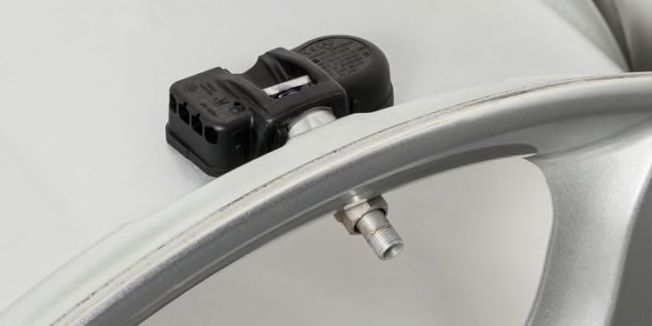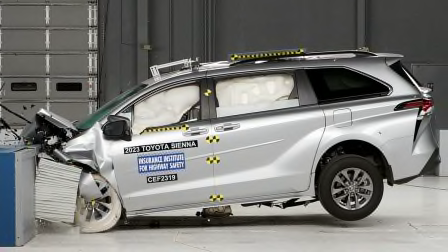Your Tire-Pressure Warning Light Just Came On. What Do You Do Now?
The culprit could be falling temperatures

Big changes between high and low temperatures that happen in the fall can trigger an alert on your dashboard, one that may leave some drivers wondering what to do next.
If you see a symbol that resembles a cutaway tire with an exclamation point, it means your tire-pressure monitoring system has issued a warning. Falling temperatures can trigger the system because tire pressure declines with the thermometer.
What Do You Do When That Warning Light Comes On?
Pull over as soon as you can and check your tire pressure. (Some systems give a generic warning, while others give a specific pressure.) Driving on improperly inflated tires can affect fuel mileage (underinflated tires are less efficient) and how the car rides and steers, particularly in an emergency situation.
And remember that the warning light can come on and then go off due to temperature changes, including heat put in the tire through driving.
“Just because the light went out doesn’t mean your tires are properly inflated,” Rogers says.
Of course, regular tire-pressure checks are always a good idea, regardless of what your tire-pressure monitoring system says.
“You still need to check your tire pressure monthly,” says Ryan Pszczolkowski, who runs tire testing at Consumer Reports. “And remember, TPMS is a warning system, not a maintenance tool.”
What Is a Tire-Pressure Monitoring System?
The system does exactly what you’d think: It keeps track of the air pressure in each of your car’s tires. It works independently in each wheel, and sets off a warning light (the tire/exclamation point icon) on the instrument cluster if the pressure is too low.
The typical trigger happens when the pressure is 25 percent lower than the manufacturer’s recommended cold-tire pressure, Pszczolkowski says, which can be measured when the tires have been sitting for at least 3 hours. You can find the recommended pressure level by checking your owner’s manual or by reading the sticker on the driver’s doorjamb.
There are two main flavors of tire-monitoring systems: direct systems and indirect systems.
“The vast majority of TPM systems in the U.S. are the direct type, which has a pressure sensor/transmitter mounted to the wheel,” Rogers says. “The sensor/transmitter is most often attached to the end of the valve stem on the end that is out of sight, inside the tire’s air chamber. A small number of direct systems have the sensor/transmitter separate from the valve stem.”
These are attached to the inside of the wheel with a metal strap.
Indirect systems get their information by comparing how the vehicle’s tires are turning in tandem, Rogers says.
“These indirect systems use the wheel-speed sensors [part of the antilock brake system] to monitor the revolutions of all four tires as the vehicle moves,” he says. “The central processor of the indirect system uses advanced algorithms to sense small changes in tire rotation speed created by different inflation pressures among the four wheel positions.”

If You Get New Tires, Do You Need New Sensors?
Not necessarily. Tire-pressure sensors aren’t permanently affixed to the old tires, and they can be reused if they’re still working well.
But Pszczolkowski says that “typically, the battery will last about 10 years and then the sensor needs to be replaced.”
Are TPMS Sensors Expensive?
The cost depends in part on the work you’re having done, says Rogers of Tire Rack. If you’re already getting new tires, the sensors will be within easy access and take only a short amount of time and labor to change.
“It becomes a lot more expensive to replace when you aren’t having a tire change done,” he says.
The average price for a direct sensor can range from $40 to $60 for most common vehicles, based on listings at tirerack.com.
Rogers says that some “niche vehicles” might have sensors that cost hundreds of dollars, but these very specialized sensors are extremely uncommon.

Shopping for Car, SUV, or Truck Tires?
See our tire ratings and buying guide.



















